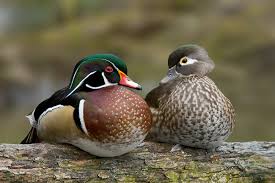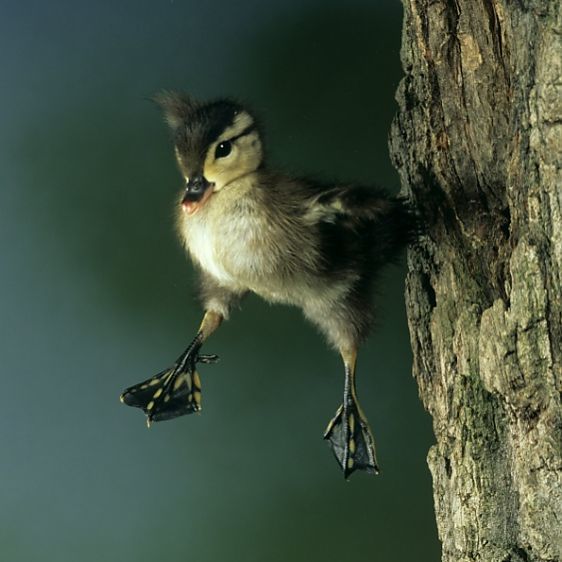by Doug Becker

How well do you know the ducks? There’s a lot to know with so many different waterfowl flying north or south over our heads, or covering our lakes and rivers by the thousands. Of all these different ducks, however, there’s one duck that stands out from all the others, and that’s the Wood Duck. The Wood Duck is well known as the most strikingly beautiful waterfowl of them all. The males have a beautiful, glossy, iridescent green crested head with delicate white pinstriping. Their sides are a buffy tan, and their breast is chestnut brown. All of this plus a bright red eye and a yellow bill. The female is more muted with an overall warm brown plumage, a smaller grayish crest, a flashy white eye-ring, and white along the dark-blue patch on each wing. For full appreciation of their beauty, a picture is worth a thousand words.

The Wood Duck is more of a woodland duck. They live in swampy and wooded backwaters, marshes, and small lakes and streams with cattails and lots of wooded cover. In fact, these beautiful ducks are cavity nesters and will perch in the trees. They find empty cavities in the crotch of trees, and sometimes in large branches overhanging the water. When it’s time for fledglings to leave the nest, they just jump into the water below, which can be from considerable heights. Wood Ducks have webbed feet for swimming, but they also have sharp claws that help them climb through the trees. Like a woodland hawk, Wood Ducks have broad tails and short broad wings that help them fly and maneuver through heavy forest. For us birders, it’s not unusual to find these ducks in small groups. The Wood Duck is very photogenic. Make sure to bring your best birding camera and binoculars!


Wood Ducks range over most of the U.S. and southeastern Canada. They are common, not far from home, but are hard to spot and well-worth the effort. Interestingly, finding the right cavity in the right tree is not easy. For this reason, Wood Duck boxes are well used by these birds. They’re no architectural wonder, and if you have the time and tools, anyone can make a Wood Duck box. These are the dimensions:

- Entrance hole (oval) 3″ high x 4″ wide
- Height of hole above the floor 16″ to 18
- Inside floor dimensions 10″x10″ to 12″x12″
- Total height of box 24″ to 25
- Recommended material cedar, cypress, or redwood
Personally, I’d just order several Wood Duck boxes, have them delivered, and get them put up and be ready to observe.
Wood Ducks eat seeds, plants, and insects. When aquatic foods are unavailable they will take to dry land for acorns or other nuts from the forest, grain from fields, berries of many kinds, caterpillars, beetles, and more. The Wood Duck is the only North American duck that regularly produces two broods in one year. After lining the nest with down feathers taken from her breast, the female will produce a clutch of 6-16, and 1 or 2 broods per year. Incubation is 28-37 days, and nesting is 56-70 days. Chicks hatch fully alert and with a full coat of down. Only one day after hatching, they jump from the nest opening. Yeow! We’ll hope for the best!


For me, ducks are always a spectacle. I’ve been thrilled by watching the early evening sky blackened by countless ducks in full migration coming in for the night on the upper Mississippi River. I’ve also enjoyed a couple of Mallards with a trailing line of ducklings waddling across our yard. But, catching the sight of a small group of Wood Ducks in the sunshine of a quiet pond is special. I encourage every birder to find some Wood Ducks near you. They are a treat to see. I’ll see ya out there!


